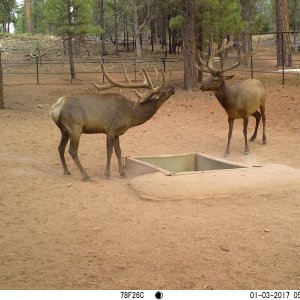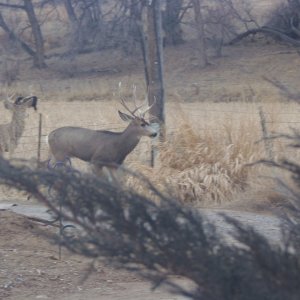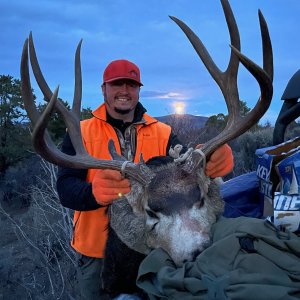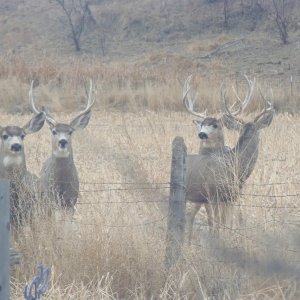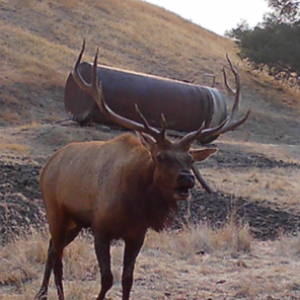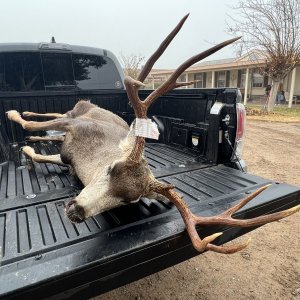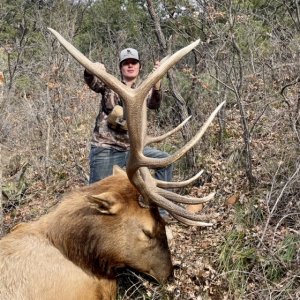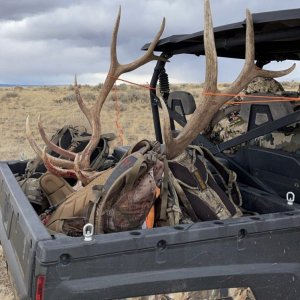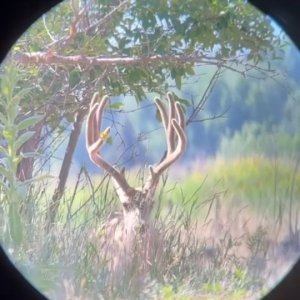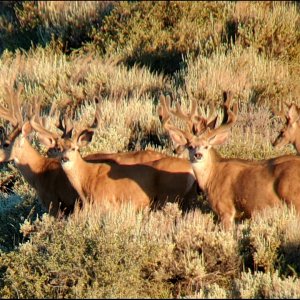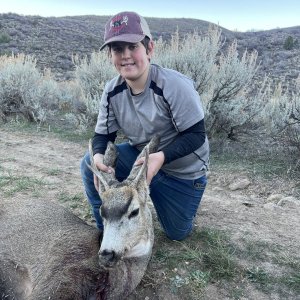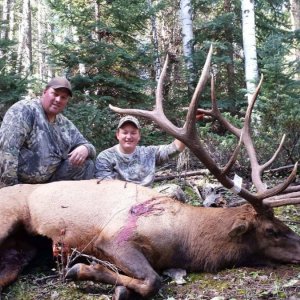I hope to hunt the Colorado second rifle season (started about October 23 in 2004 and runs about a week) in unit 75 NE of Durango either this year or 2006, specifically in the Weminuche Wilderness arrea. This will be a cow rifle hunt. I have collected some information which has led me to focus on hunting three specfic drainages or canyons. My sources suggest that, baring an early heavy snow, the elk will be around tree line in this area. If the elk have been pressured, they are liable to be in the dark timber. Tree line in this area is about 12,000'. I'll be camping around 11,500'. I see on the 7.5' quadrangle maps that the trees seem to be located on the slopes angling down to the creek draining the canyons and on the ridges, but right around the creeks there seem to be no trees.
I am a first time elk hunter. My idea is generally to go up a canyon a good ways, until I top out above tree line, cross over the ridge into the adjoining canyon and generally go down that canyon, returning to the point I started from. I'm guessing I want to remain out of sight up in the trees as I am moving and not walk in the open along the creek itself. Having covered half of two canyons in this way in a day, I would cross over and repeat the same approach for the next canyon (day 1: west slope of canyon B, east slope of canyon A; day2: west slope of canyon C, east slope of canyon B; day 3: west slope of canyon D, east slope of canyon C). It would appear that one of these day trips would cover maybe 5 miles with an elevation gain of about 600 feet to top out at tree line. I view this as principally scouting with the provision that when my scouting reveals elk, then the scouting transitions to hunting.
What should my procedure be? All I can think of is to watch for elk sign -- tracks and elk poop as I walk. Also, that I glass for elk in openings as openings reveal themselves, particularly at first and last light. I would also examine ponds or lakes away from the creek to see if elk are going to that water to drink, perhaps contemplating a late afternoon ambush. I plan to be prepared to bivouac out overnight if I spot elk and a stalk is enabled by staying out.
I am well aware of the physical conditioning requirements, equipment requirements, rifle requirements, meat packing difficulties and prefer that responses focus on the actual hunting techniques, finding the elk techniques. I've backpacked in this area before and at and above these altitudes.
I am a first time elk hunter. My idea is generally to go up a canyon a good ways, until I top out above tree line, cross over the ridge into the adjoining canyon and generally go down that canyon, returning to the point I started from. I'm guessing I want to remain out of sight up in the trees as I am moving and not walk in the open along the creek itself. Having covered half of two canyons in this way in a day, I would cross over and repeat the same approach for the next canyon (day 1: west slope of canyon B, east slope of canyon A; day2: west slope of canyon C, east slope of canyon B; day 3: west slope of canyon D, east slope of canyon C). It would appear that one of these day trips would cover maybe 5 miles with an elevation gain of about 600 feet to top out at tree line. I view this as principally scouting with the provision that when my scouting reveals elk, then the scouting transitions to hunting.
What should my procedure be? All I can think of is to watch for elk sign -- tracks and elk poop as I walk. Also, that I glass for elk in openings as openings reveal themselves, particularly at first and last light. I would also examine ponds or lakes away from the creek to see if elk are going to that water to drink, perhaps contemplating a late afternoon ambush. I plan to be prepared to bivouac out overnight if I spot elk and a stalk is enabled by staying out.
I am well aware of the physical conditioning requirements, equipment requirements, rifle requirements, meat packing difficulties and prefer that responses focus on the actual hunting techniques, finding the elk techniques. I've backpacked in this area before and at and above these altitudes.

